- Home
- international
- news
- Inside Ghana's largest secondhand clothing market, where 7.5 million pounds of donated garments arrive every week
Inside Ghana's largest secondhand clothing market, where 7.5 million pounds of donated garments arrive every week
Isaiah Reynolds,Emily Harger

Daniel Attoh and Modestus Zame / Kashif Khan Productions
- Kantamanto Market in Accra, Ghana, sources secondhand clothing from around the world.
- The influx of fast fashion, however, is turning unsellable items into massive landfills that threaten public health.
Ghana's Kantamanto Market is one of the largest used clothing hubs in the world. More than 30,000 vendors, traders, and retailers work to make profit off of the clothing that arrives in their ports.
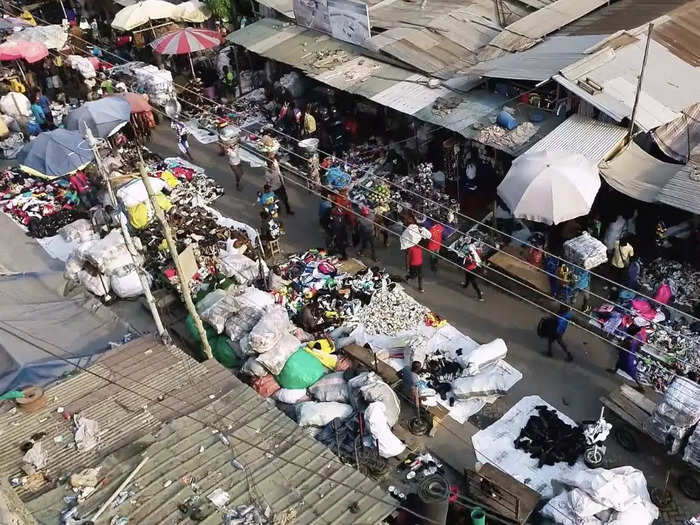
Daniel Attoh and Modestus Zame / Kashif Khan Production
Source: Insider
The market is the last stop for much of the world's used clothing. But because of the overwhelming supply, more than a third of the garments leave as waste, piling up in landfills, clogging water systems, and polluting the ocean.
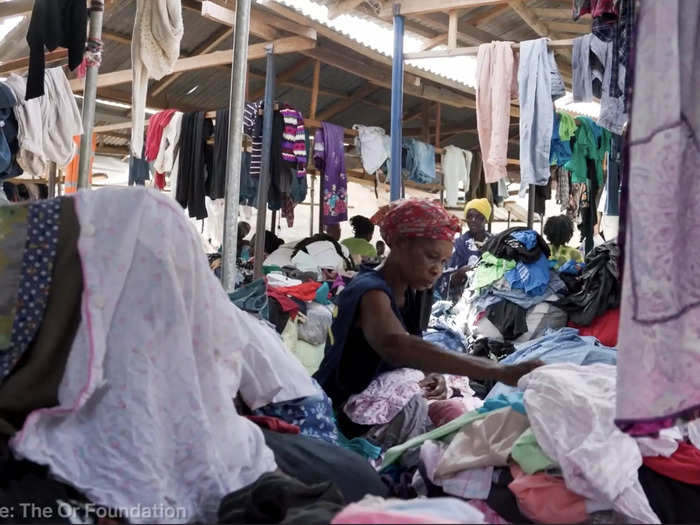
Daniel Attoh and Modestus Zame / Kashif Khan Production
Source: Insider
American donation centers, like Goodwill or Salvation Army, employ exporters to take clothing that does not sell in thrift stores to sorting facilities around the world.
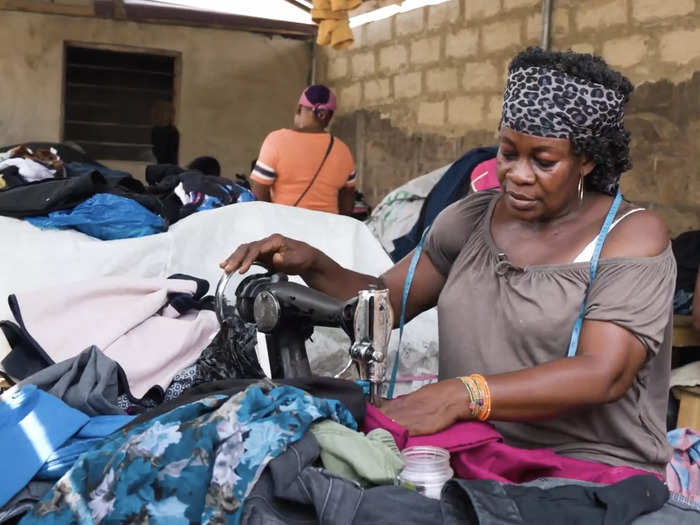
Daniel Attoh and Modestus Zame / Kashif Khan Productions
Sorting facilities sift through the millions of remaining pieces to properly dispose of ones that are in no condition to sell. However, many slip through the cracks and end up in shipments to their final stop: Kantamanto Market.
Source: Insider
Shipping containers of tightly-packed, 125-pound bales arrive in the ports of Accra for distribution. Retailers buy the bales from anywhere between $100 to $300 without knowing its contents.
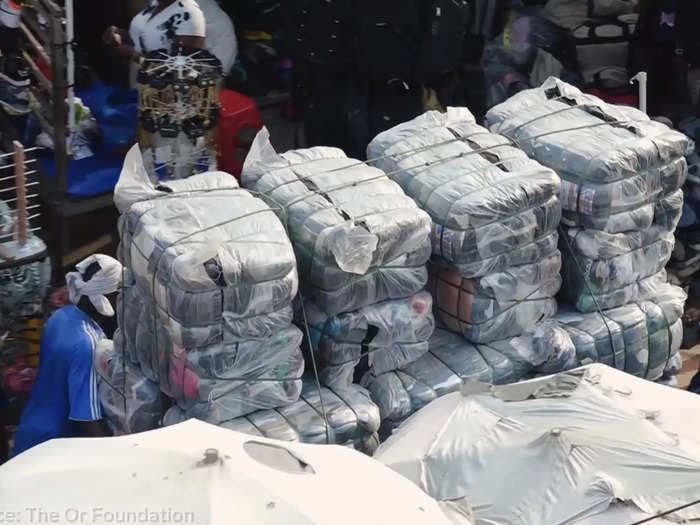
Daniel Attoh and Modestus Zame / Kashif Khan Productions
Source: Insider
The retailers' profits are entirely dependent on the quality of their bales — good garments could go for 10 cedis ($1.60) while cheaper or ripped items could be purchased for 1 cedi ($0.16).
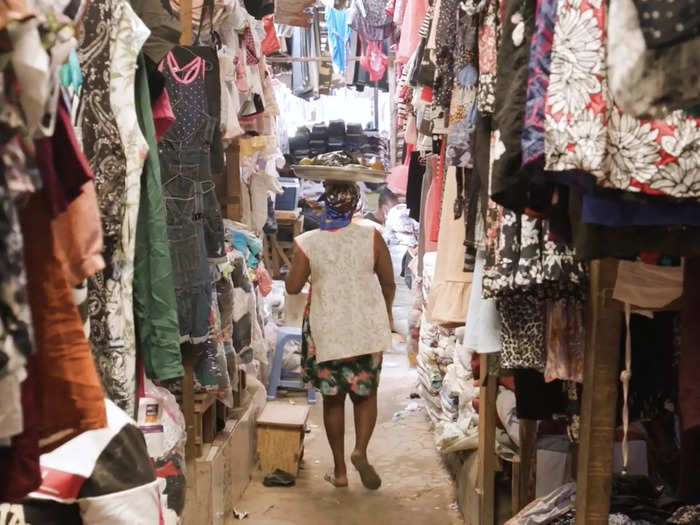
Daniel Attoh and Modestus Zame / Kashif Khan Productions
Source: Insider
While this was once a sustainable business for some vendors, the prices of the bales are increasing while the quality of the clothes have declined, leaving many in debt.
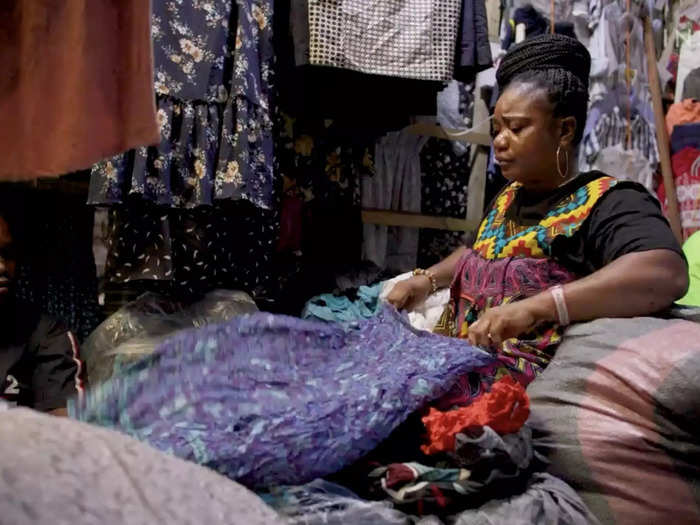
Daniel Attoh and Modestus Zame / Kashif Khan Productions
Source: Insider
In order to improve quality, Kantamanto workers dye denim jeans to make them look new, buff shoes to improve their color, and recruit onsite tailors to sew damaged clothing.
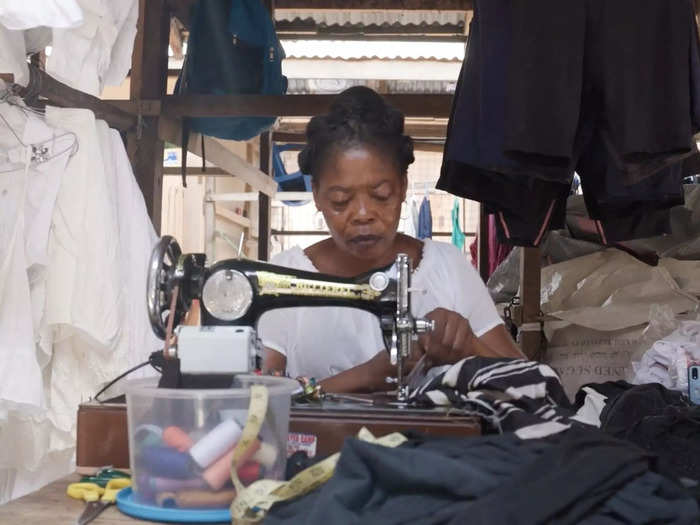
Daniel Attoh and Modestus Zame / Kashif Khan Production
Source: Insider
Many of the cheap garments are from companies that produce "fast fashion," or mass-marketed clothing that uses inexpensive material and labor. What doesn't sell in the market is then transferred to giant landfills that rival nearby buildings in height.
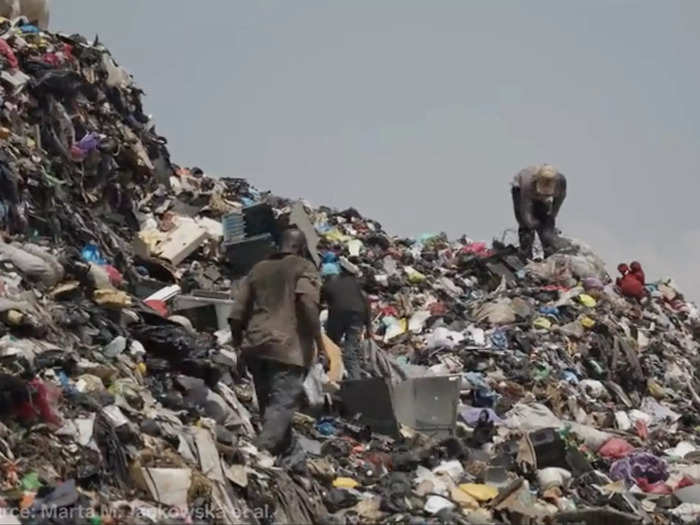
Daniel Attoh and Modestus Zame / Kashif Khan Productions
Source: Insider
These landfills overflow into the cities open sewage system which can contribute to flooding and create a public health crisis. The landfills become a breeding ground for mosquitoes that spread malaria. Rainwater soaking in the stacks of clothes can also spread cholera.
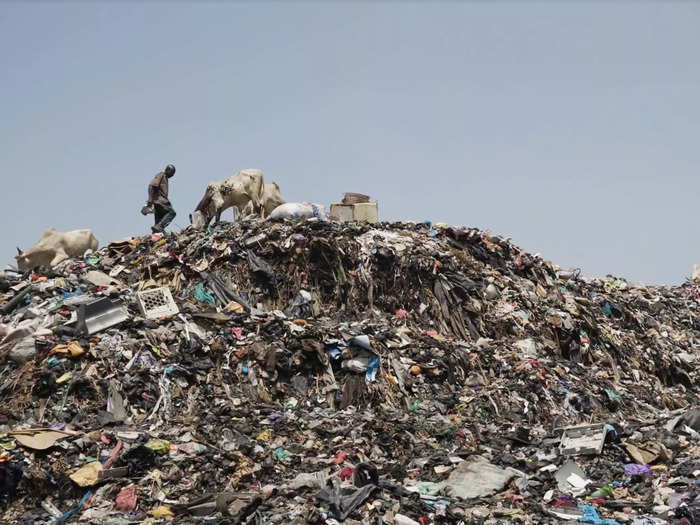
Daniel Attoh and Modestus Zame / Kashif Khan Production
Source: Insider
The garments have also ended up on the city's beaches, piling up on the shoreline, eventually being washed away by the waves, polluting the ocean.
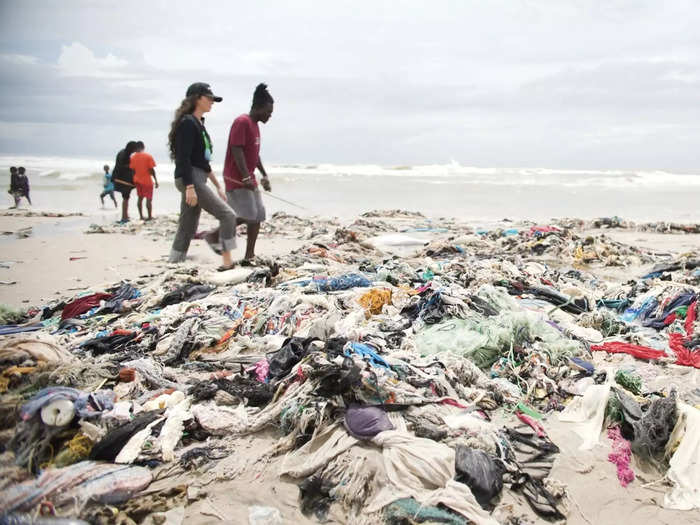
Daniel Attoh and Modestus Zame / Kashif Khan Production
Source: Insider
Non-profit organizations, like the Or Foundation, have tracked the buildup of garments on the shoreline, measuring up to 350 large "tentacles" of tattered clothing tangled together in just two months.
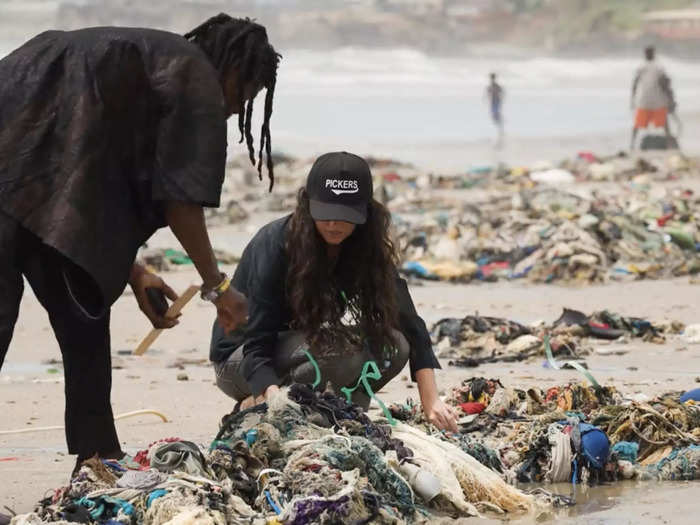
Daniel Attoh and Modestus Zame / Kashif Khan Productions
As the global waste crisis grows and landfills are no longer an option, countries like Ghana have had to come up with creative solutions to repurpose the waste that comes through their ports.
Source: Or Foundation, Insider
Through workshops and support from the Or Foundation, Kantamanto retailers are learning how to sew and make a profit from mended clothing.
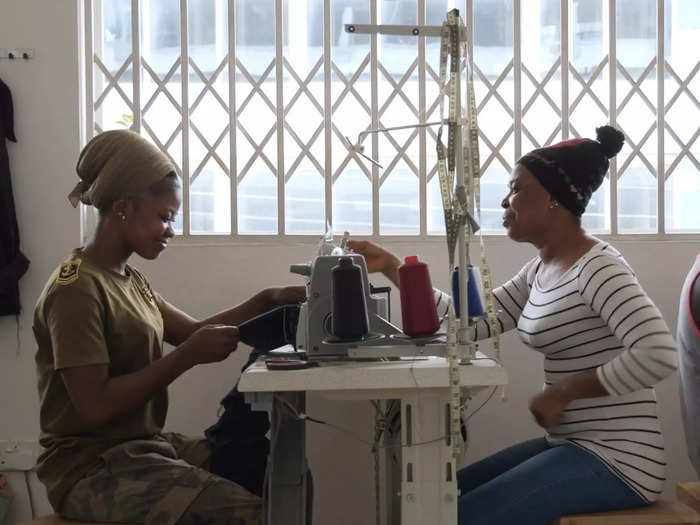
Daniel Attoh and Modestus Zame/ Kashif Khan Productions
Source: Insider
Others can learn how to shred unsellable clothing to make insulation for housing materials or mattresses. Although it does not always turn a large profit, the practice is able to reduce the volume of waste on the shorelines overrun by clothing.
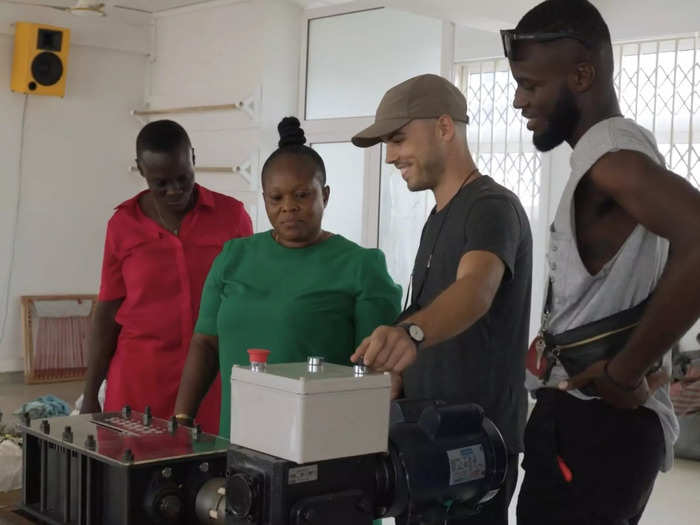
Daniel Attoh and Modestus Zame / Kashif Khan Production
Source: Insider
On a global scale, decision makers are taking legal action. France and Sweden have already passed "extended producer responsibility" legislation that requires textile makers to fund clothing recycling around the world.
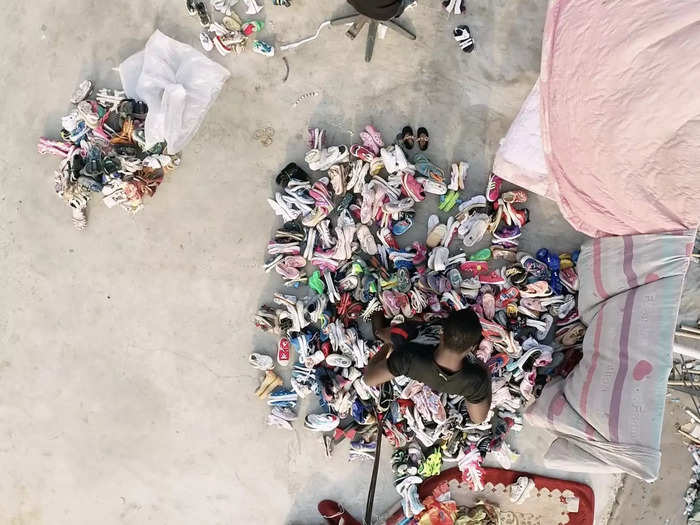
Daniel Attoh and Modestus Zame / Kashif Khan Production
Source: Insider, HM Government
As it stands, the burden of recycling and waste management falls on the localities in Ghana — extended producer responsibility funding could transform the future of Kantamanto Market and provide a model for the future of green waste management.
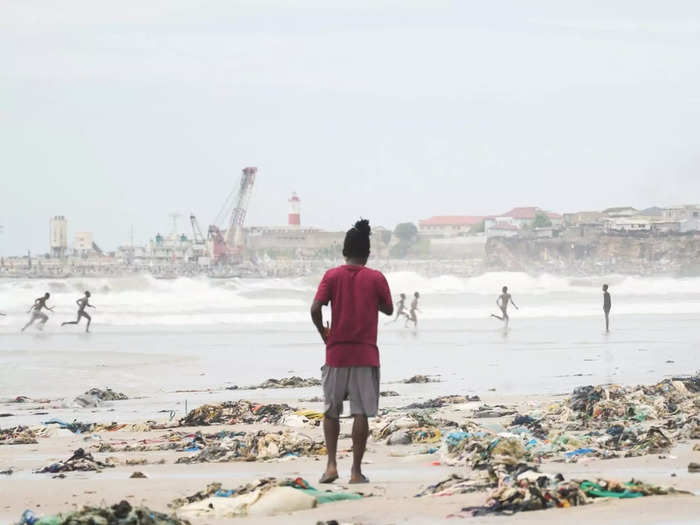
Daniel Attoh and Modestus Zame / Kashif Khan Productions
Source: Insider
Popular Right Now
Popular Keywords
Advertisement